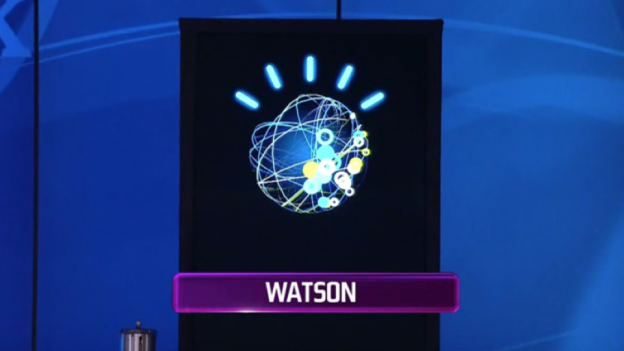
Everyone’s favorite “Jeopardy!”-playing supercomputer, Watson, may one day fit in your pocket. IBM tells Bloomberg Businessweek that it is currently working to shrink the information powerhouse into the form of a smartphone and tablet. The company believes a mini Watson could provide ample benefits to businesses, from farmers to medical professionals, which would help IBM tap into new markets that could bring in an estimated $16 billion in revenue by 2015.
For example, a voice-enabled Watson smartphone could provide complex answers to help solve business problems, like where to launch a product, or when to plant crops. It could also be able to analyze a patient’s symptoms to help doctors more accurately diagnose an illness. It would be like Apple’s Siri on steroids — deeper, stronger, and more accurate.
Wanting to make a mini Watson — which IBM calls “Watson 2.0” — and successfully clearing the technological hurdles to do so are two entirely different matters.
First is the problem of energy. According to IBM, Watson “is made up of a cluster of ninety IBM Power 750 servers (plus additional I/O, network and cluster controller nodes in 10 racks) with a total of 2880 POWER7 processor cores and 16 Terabytes of RAM. Each Power 750 server uses a 3.5 GHz POWER7 eight core processor, with four threads per core.” In other words, it takes a whole lot of energy to power Watson’s sophisticated DeepQA technology, which powers its question-answering abilities.
The next obstacle is fitting Watson 2.0 with voice and image recognition capabilities, which Watson currently does not possess. On top of that, IBM must make Watson more user-friendly by allowing it to understand natural language, in the way Siri (kind of) does.
Adding to IBM’s challenges is the fact that Watson must “learn” what the correct answers are for different situations. Machine-learning takes time, so making a Watson smartphone fully useful out of the box remains something IBM must solve before its Watson 2.0 vision can become a reality.
Editors' Recommendations
- I turned my phone into a camera, and I don’t want to go back
- This cute AI gadget wants to replace your smartphone
- CES 2023: Citizen’s newest smartwatch puts part of NASA on your wrist
- Google wants your smartphone to be able to save your eyes
- How to turn your smartphone into a spy camera or baby monitor


